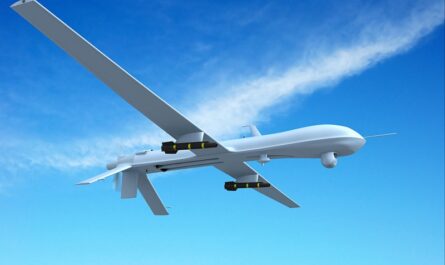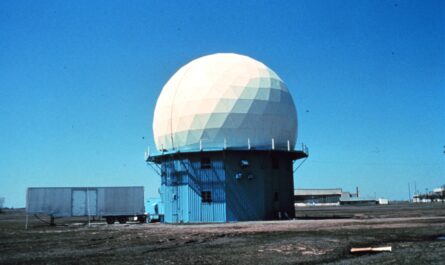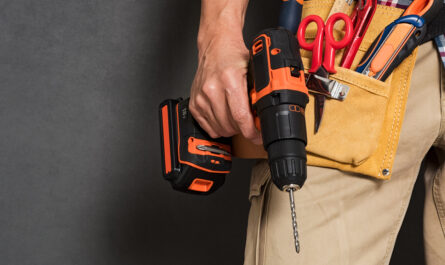Process control valves play a crucial role in regulating fluid flow, pressure and temperature in various industrial processes. Over the past few decades, motorized control valves have gained popularity due to their ability to precisely control flow rates and provide automated process control. These valves integrate actuators with control motors that allow remote operation through centralized digital control networks
Types of Motorized Control Valves
There are mainly two types of motorized control valves – linear and rotary actuated valves. Linear actuated valves use linear motion from electric or pneumatic actuators to open and close valve plugs or balls. On the other hand, rotary actuated valves utilize rotary motion from actuators to alter the flow path geometry via discs or spheres. Actuators are of two basic designs – linear and rotary. Pneumatic actuators use compressed air as the motive force while electric actuators employ electric motors in place of pneumatics.
Valve Components and Operation
A motorized control valve typically consists of four main components – body, trim, actuator and positioner. The valve body houses the trim which is the flow control element like plug, ball or butterfly. Actuators provide the mechanical power required to move the trim element. Positioners are feedback controllers that ensure the valve plug/ball achieves the desired position. Positioners take a set-point signal from the control system and compare it with actual valve position detected by potentiometers or limit switches. Based on the error signal, the positioner regulates the actuator to align valve position. Motorized actuators facilitate remote operation while positioners enable accurate process control.
Applications in process industries
Motorized control valves find extensive use across process industries like oil & gas, chemical, power, water & wastewater, food & beverage and pharmaceuticals where automatic control of critical parameters is indispensable. Some prominent applications are discussed below:
– Oil & gas: Used for flow control in pipelines, pressure regulation at wellheads, controlling liquid levels and automated isolation of sections for maintenance in refineries.
– Chemicals: Common usages include dosage control of reactants, temperature control of reactors via steam regulation, pumping of corrosive chemicals and controlling scrubbers.
– Power: Applications involve boiler blowdown flow control, feedwater regulation, coordination of coal/gas flow and isolation of pipelines in power plants.
– Water/waste: Employed for flow metering, blending of treatment chemicals, suction head pressure control and bypass/diversion of streams in water treatment facilities.
– Food processing: Used for pumping food products, regulating sanitizing chemicals, controlling temperatures of kettles and mixers.
Advantages of Motorized Control Valves
Compared to conventional manually operated valves, motorized valves offer numerous improved capabilities that have made them a preferred choice for modern process automation:
Remote operation: Motorized valves allow remote open/close operation and positioning through electronic or pneumatic signals from control rooms or distributed control systems (DCS). This eliminates the need for manual intervention at valve sites.
Precise control: The use of positioners and actuators facilitates accurate valve movement providing better process control capabilities in terms of flow rates, pressures, temperatures and levels within desired setpoints.
Automation: Positioners enable fully automated flow regulation conforming to control algorithms programmed in DCS. This streamlines operations and reduces human errors and inconsistencies.
Data monitoring: Control valves when integrated into digital networks offer remote monitoring of diagnostics data like stem travel, switch positions, voltages and currents. This allows predictive maintenance.
Customized tuning: Advanced positioners with microprocessors permit custom pressure and actuation curves tailored to specific valve/application needs enhancing stable and efficient control response.
Fail safe operation: Motorized valves can default to predefined safe positions like open or closed in case of power/signal failure minimizing the risks from uncontrolled processes.
Reduced emissions: Automated valve operation through digital control helps operate processes in most energy efficient modes reducing emissions and wastages.
Low maintenance: Properly engineered electro-hydraulic actuation ensures smooth and reliable operation over long durations with minimal downtimes arising from maintenance needs.
Improving Process Safety and Efficiency
Considering their capabilities for precise and automated flow regulation with data acquisition, motorized valves have become indispensable in today’s digitally controlled, smart process plants. They help improve safety by enabling remote monitoring and fail-safe operation while also enhancing process efficiencies through energy savings, reduced emissions and better product output quality. Ongoing innovations in actuator technologies, advanced materials for valve trims and integration into distributed control systems are expanding their roles across a wider range of critical process applications. As industries progress towards Industry 4.0 standards, control valves are sure to play a pivotal part in realizing the full potential of automated and intelligent manufacturing operations.
*Note:
1. Source: Coherent Market Insights, Public sources, Desk research
2. We have leveraged AI tools to mine information and compile it




